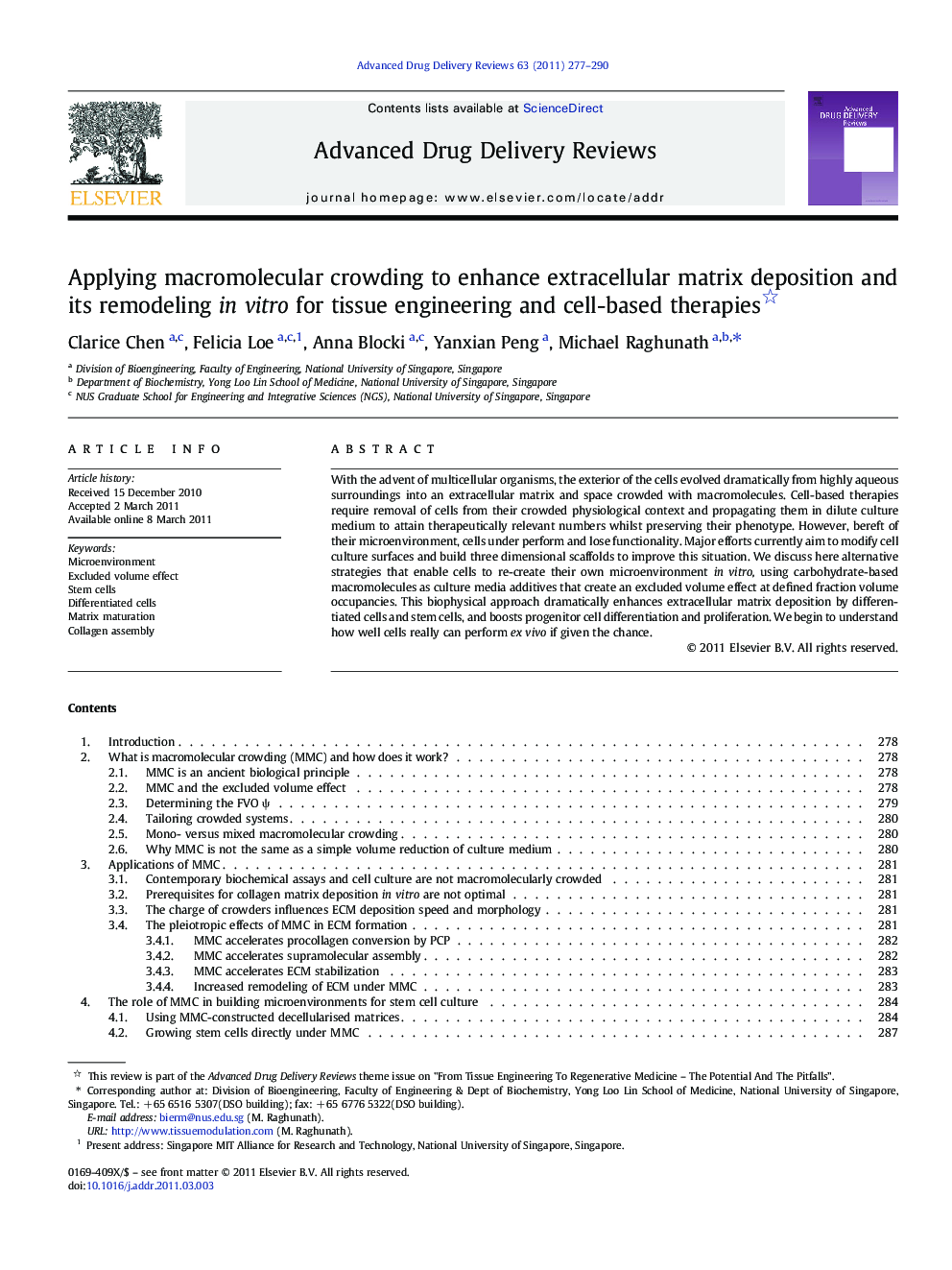| Article ID | Journal | Published Year | Pages | File Type |
|---|---|---|---|---|
| 2071363 | Advanced Drug Delivery Reviews | 2011 | 14 Pages |
With the advent of multicellular organisms, the exterior of the cells evolved dramatically from highly aqueous surroundings into an extracellular matrix and space crowded with macromolecules. Cell-based therapies require removal of cells from their crowded physiological context and propagating them in dilute culture medium to attain therapeutically relevant numbers whilst preserving their phenotype. However, bereft of their microenvironment, cells under perform and lose functionality. Major efforts currently aim to modify cell culture surfaces and build three dimensional scaffolds to improve this situation. We discuss here alternative strategies that enable cells to re-create their own microenvironment in vitro, using carbohydrate-based macromolecules as culture media additives that create an excluded volume effect at defined fraction volume occupancies. This biophysical approach dramatically enhances extracellular matrix deposition by differentiated cells and stem cells, and boosts progenitor cell differentiation and proliferation. We begin to understand how well cells really can perform ex vivo if given the chance.
Graphical abstractFigure optionsDownload full-size imageDownload high-quality image (1353 K)Download as PowerPoint slide
